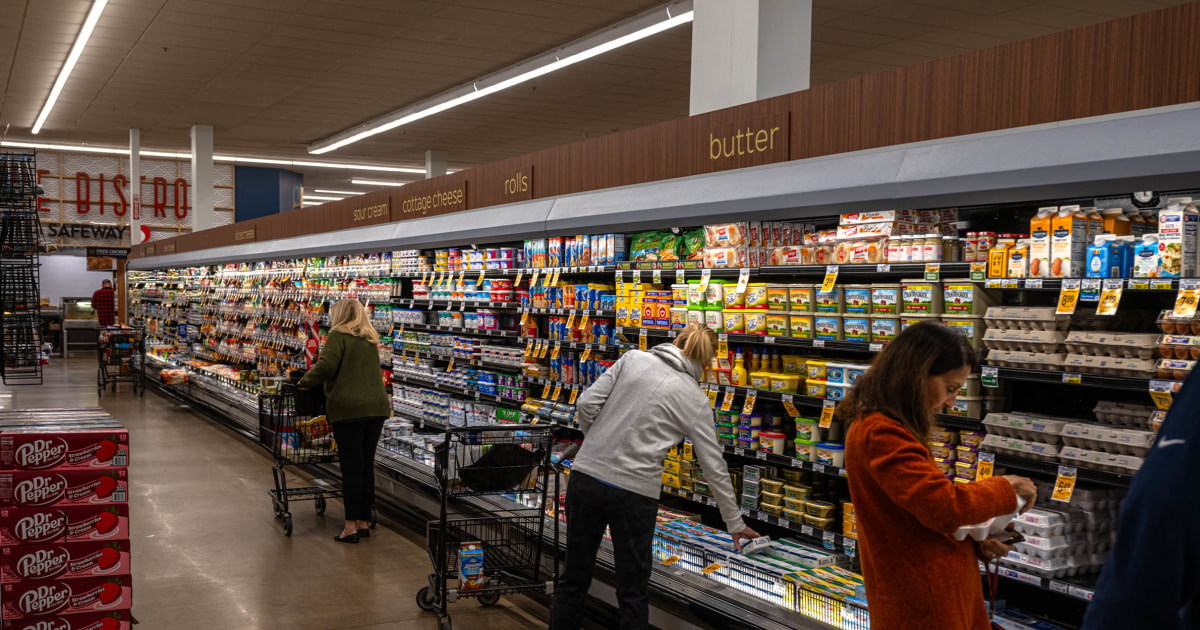Food and shelter saw outsized price growth. Grocery prices, led by meat and eggs, rose 1.3%, while the costs of food away from home climbed 3.9%. Housing costs climbed 4.9% last month from the year before. The latter helped push the “core” measure of inflation, which excludes volatile food and energy prices, up 0.3% on the month, higher than the 0.2% forecast.
Even as inflation has normalized, many households are still adjusting to prices that are more than 21% higher on average than in early 2020, with some goods and services surging even more. Pay gains, however, have more than kept pace — as they’ve done for roughly the last two years. Adjusted for inflation, average hourly earnings climbed 1.5% as of September from the same time a year earlier.
Those net income gains have chugged along even as consumers’ attitudes have remained relatively downbeat. A government analysis this summer found the average U.S. worker can afford the same set of goods and services as they did in 2019 — and still pocket an extra $1,400 each year.
Overall, the post-Covid U.S. economy has continued to be the envy of most industrialized nations. But there are still some signs that growth is slowing.
Following Thursday’s inflation report, separate data from the Labor Department showed an uptick in jobless claims. The major stock indexes pared back gains in pre-market trading on Tursday morning, while traders upped the odds that the Federal Reserve will lower interest rates by a quarter point at its meeting next month.
Higher costs remain the top-ranked issue of concern for voters heading into November’s election. Former President Donald Trump has sought to tie Vice President and Democratic presidential candidate Kamala Harris to those price increases, accusing her of sitting by while the Biden administration approved spending he says has helped fuel the inflation boom.
But economists remain uncertain about the extent that fiscal stimulus has influenced inflation, with many saying supply chain issues and changes in consumer behavior have played an equal or greater role.
Trump has not offered a detailed economic plan besides proposing a blanket set of tariffs of up to 20% that he says will boost jobs and raise revenues — outcomes many economists have disputed.
For her part, Harris has proposed measures including capping rent and grocery price increases, policies whose efficacy — let alone ability to get approved by lawmakers — have likewise been met with skepticism by some analysts. Harris has narrowed the gap in some surveys about which presidential candidate would be better on economic issues, but Trump still leads on that metric.
While both candidates agree high prices are hurting consumers, the nation is also divided over the state of the economy. According to the most recent University of Michigan Consumer Survey, Republicans’ ratings of current economic conditions are at the lowest levels on record, while Democrats’ views are nearly three times as favorable.
The Biden-Harris administration has been enjoying a tailwind in the form of minimal growth in gasoline prices: Compared with the same period a year ago, the average price of a gallon of fuel is about 50 cents cheaper, according to AAA. Prices could begin to creep up again amid turmoil in the Middle East that has already sent oil prices higher but, for now, one of the most visible signs of living costs remains muted.
Today’s inflation numbers could cause Wall Street to pare back expectations of an interest-rate cut at the Federal Reserve’s next meeting in November. Following an unexpectedly strong jobs report last week, traders virtually erased the odds of another half-point cut, and heading into Thursday had increased the odds of no cut at all to more than 1 in 5.
In its most recent reading, the National Federation of Independent Business, which represents small business owners, found its uncertainty reading had hit an all-time high.
“Uncertainty makes owners hesitant to invest in capital spending and inventory, especially as inflation and financing costs continue to put pressure on their bottom lines,” said NFIB economist Bill Dunkelberg. “Although some hope lies ahead in the holiday sales season, many Main Street owners are left questioning whether future business conditions will improve,” he said.

